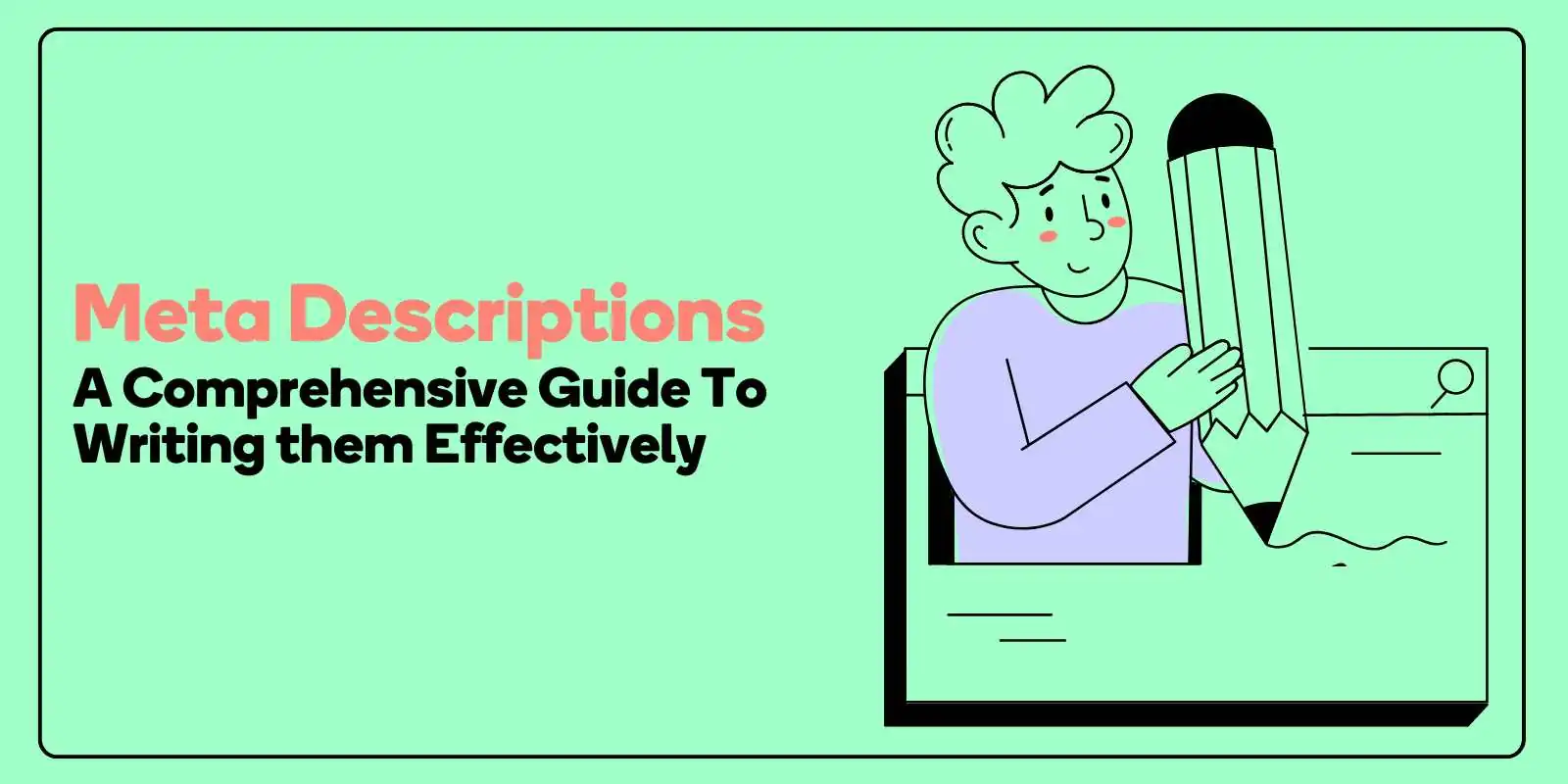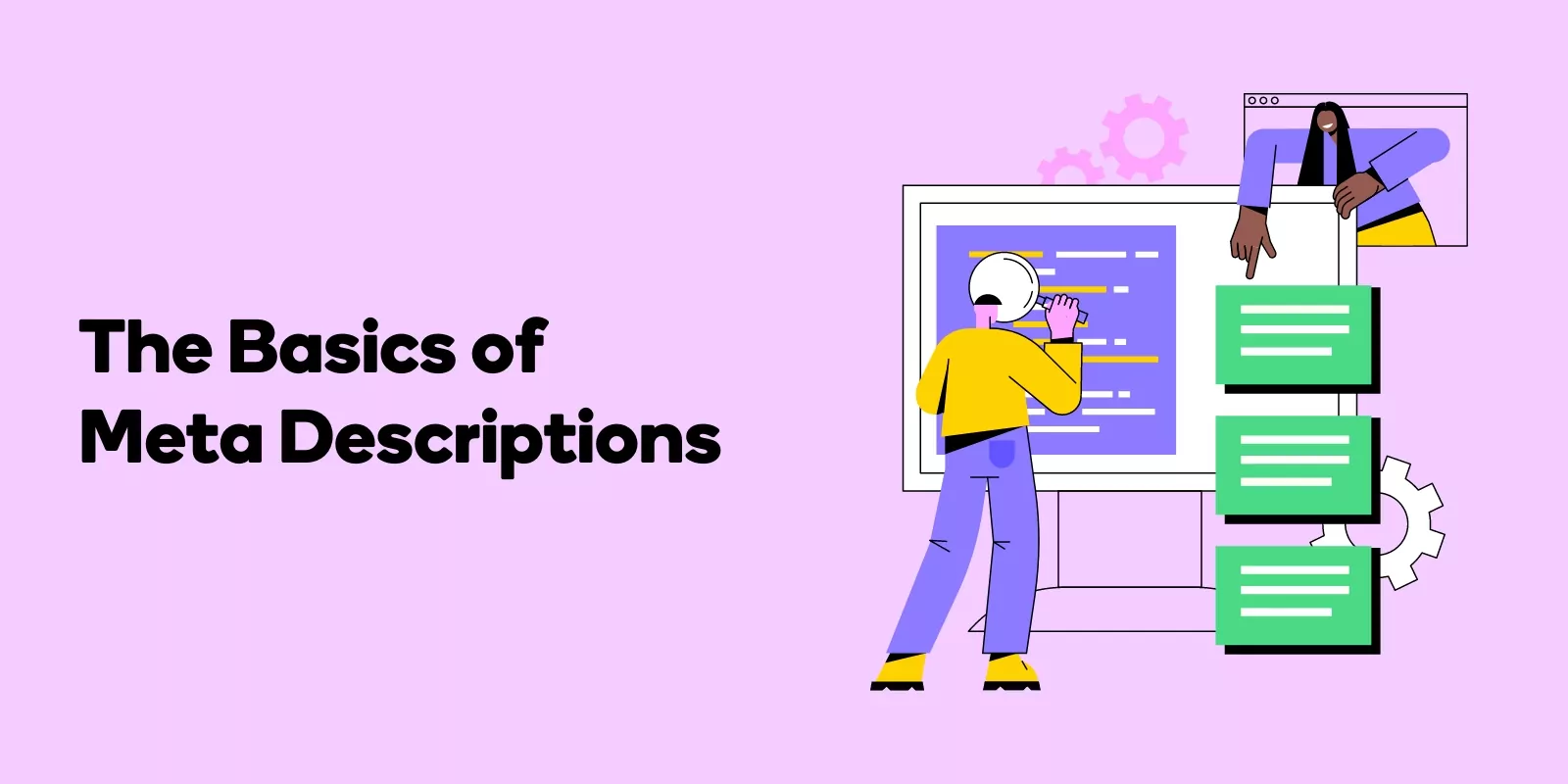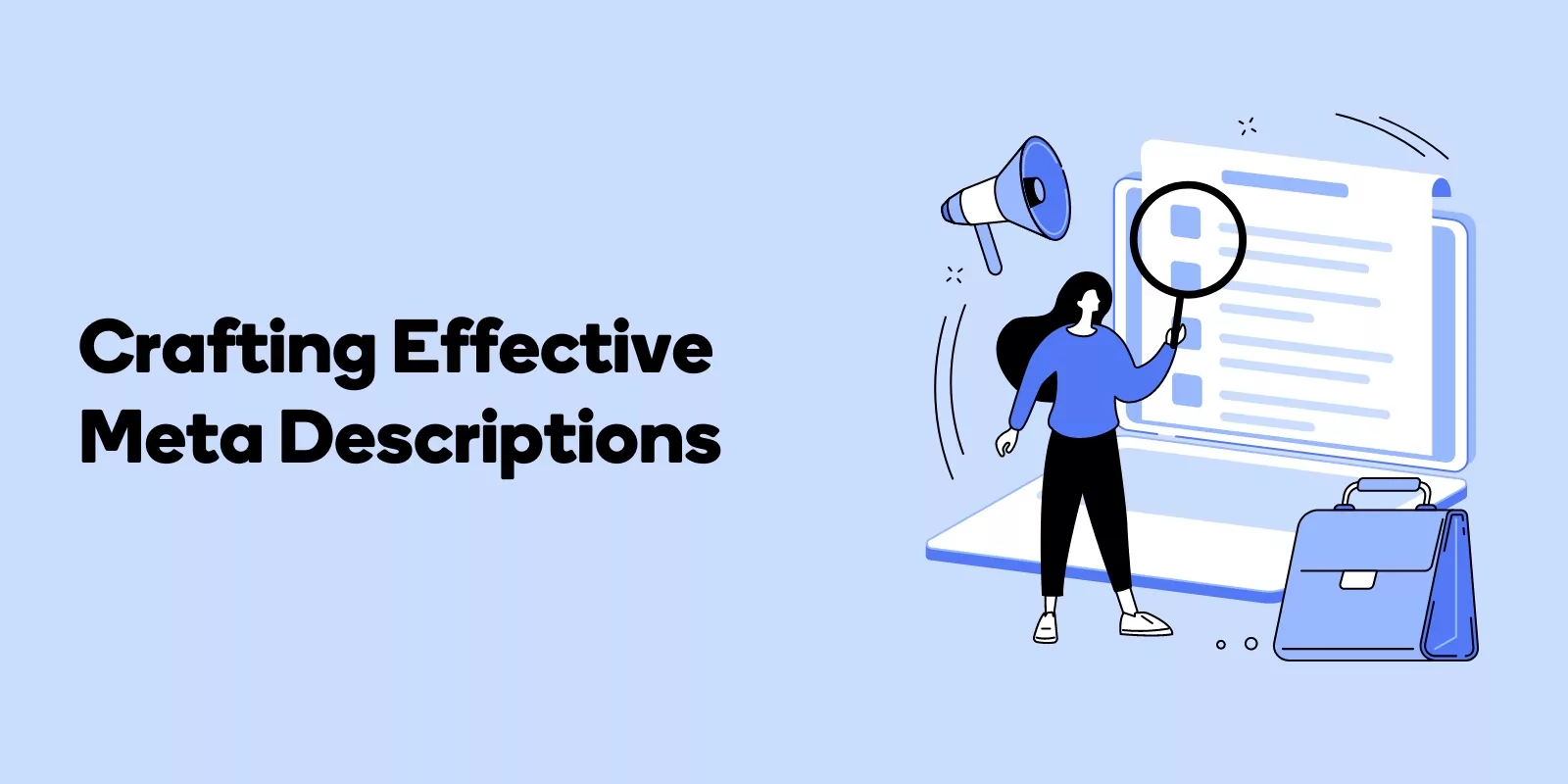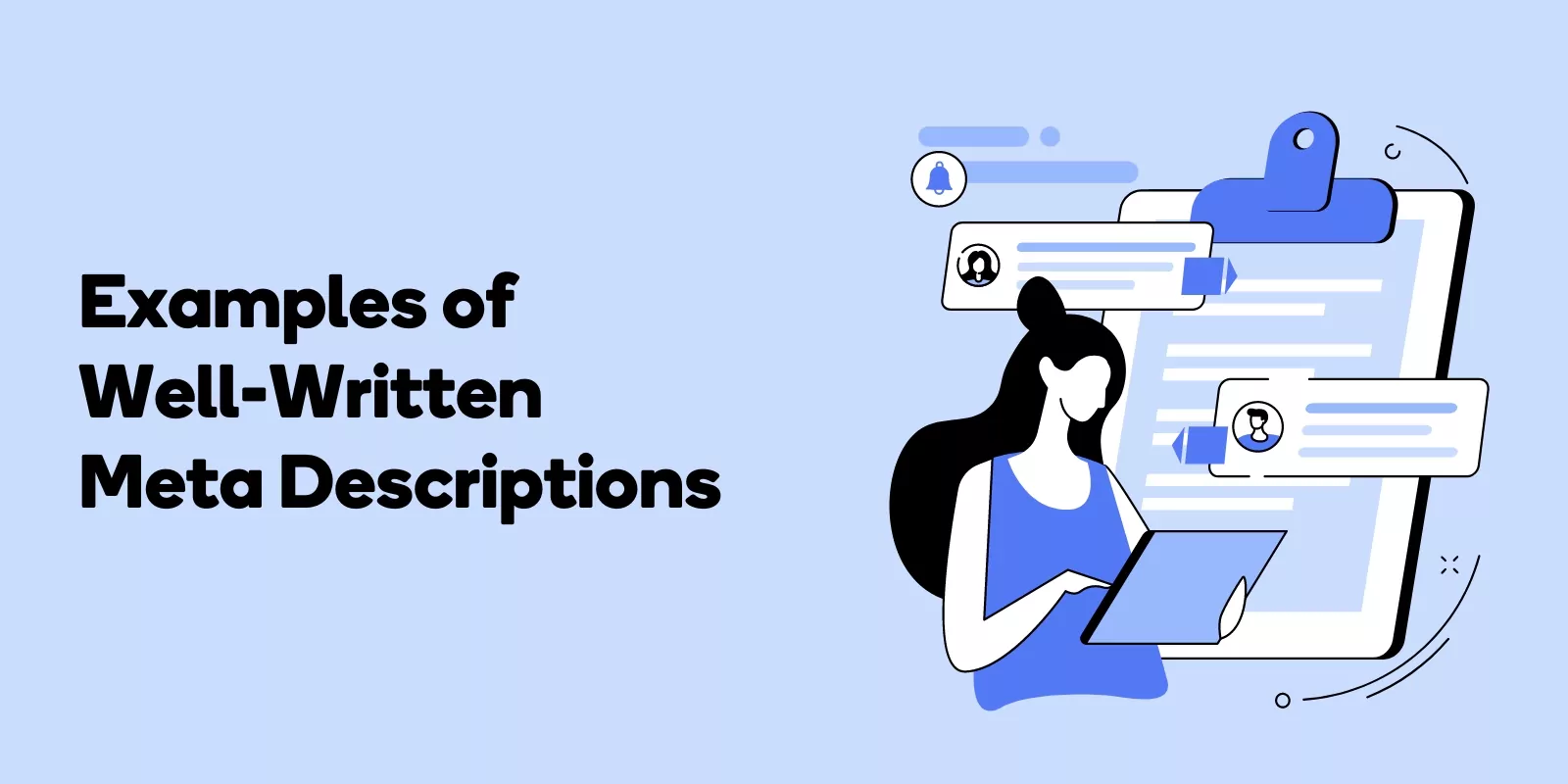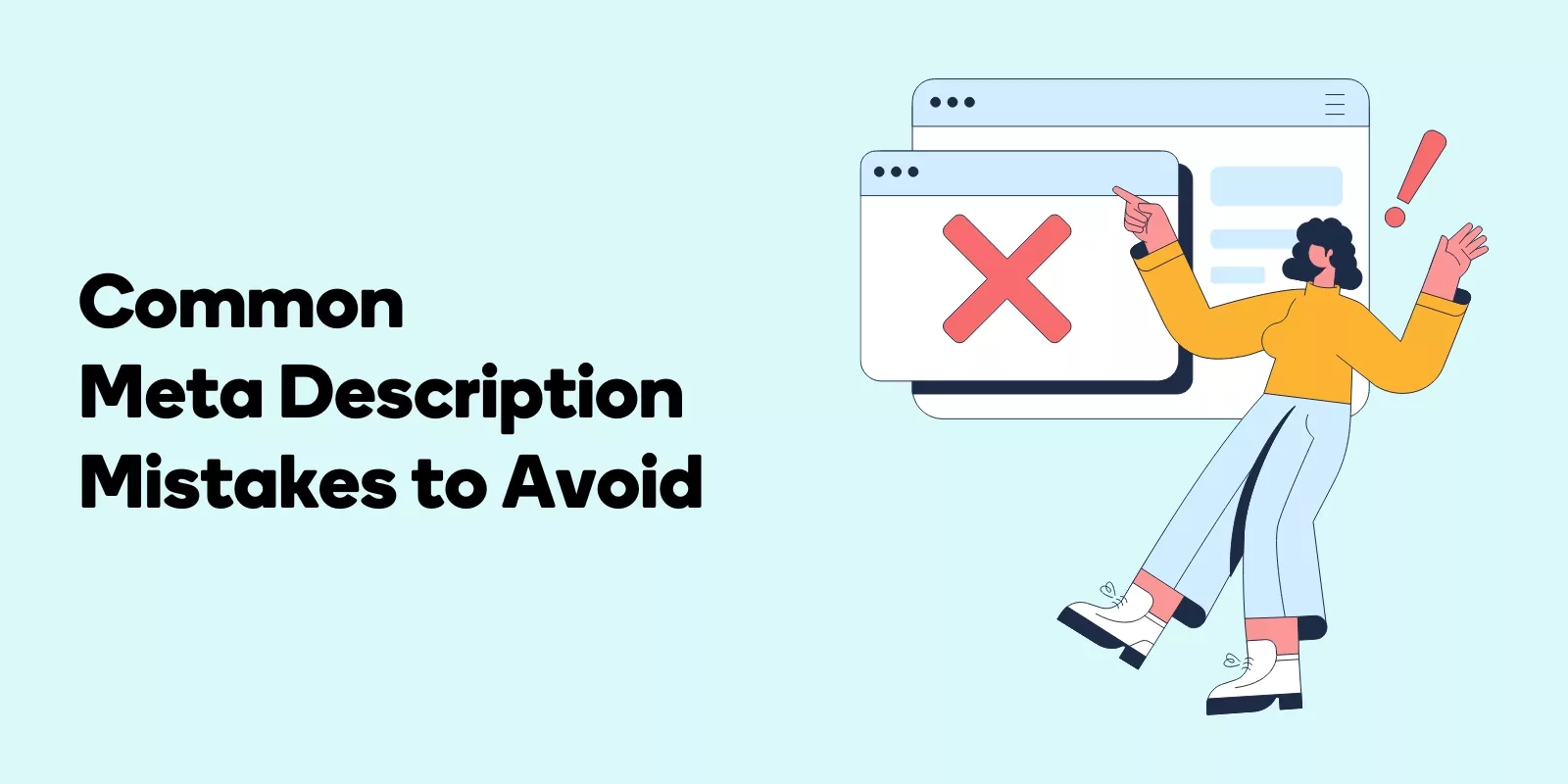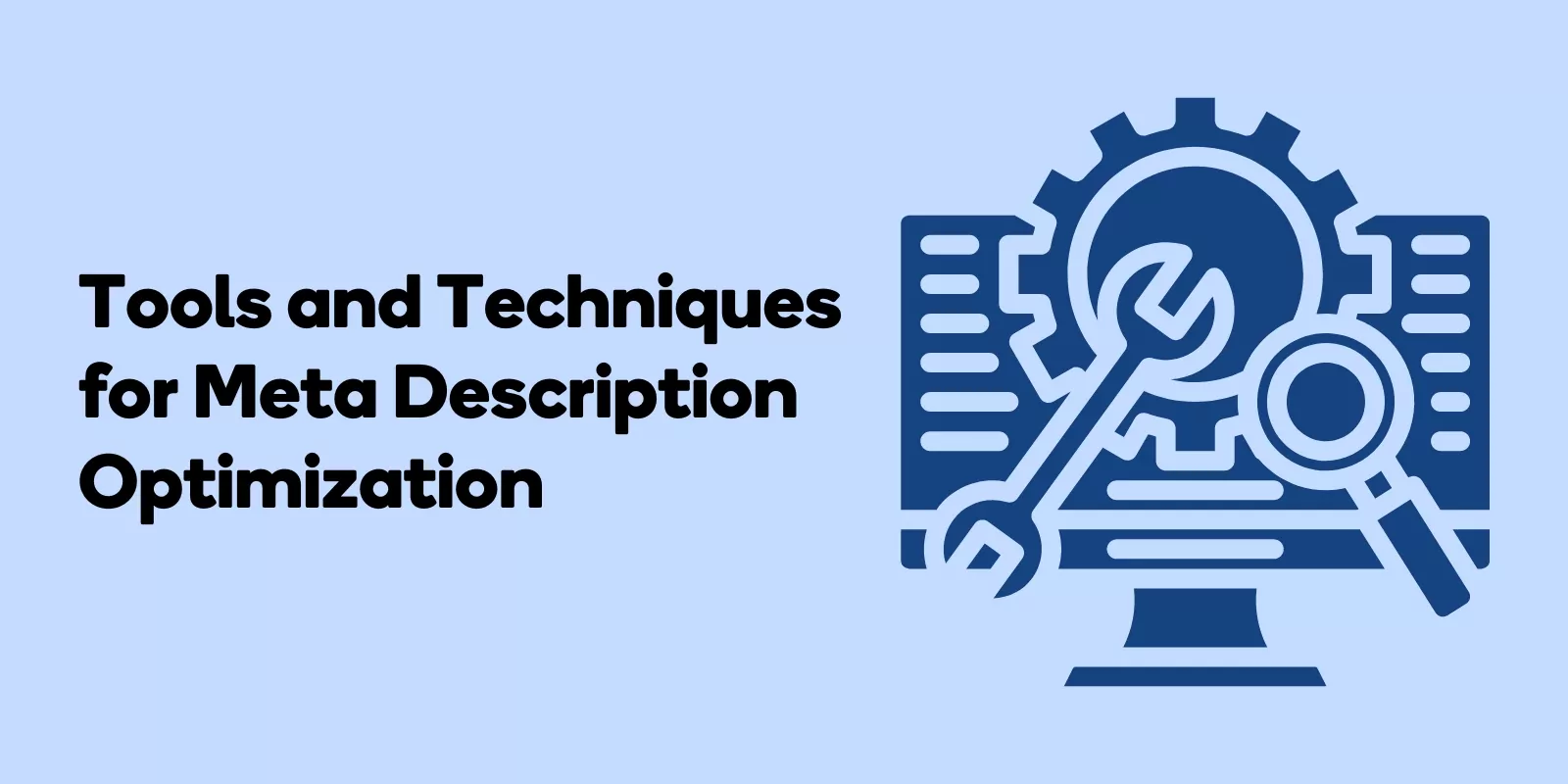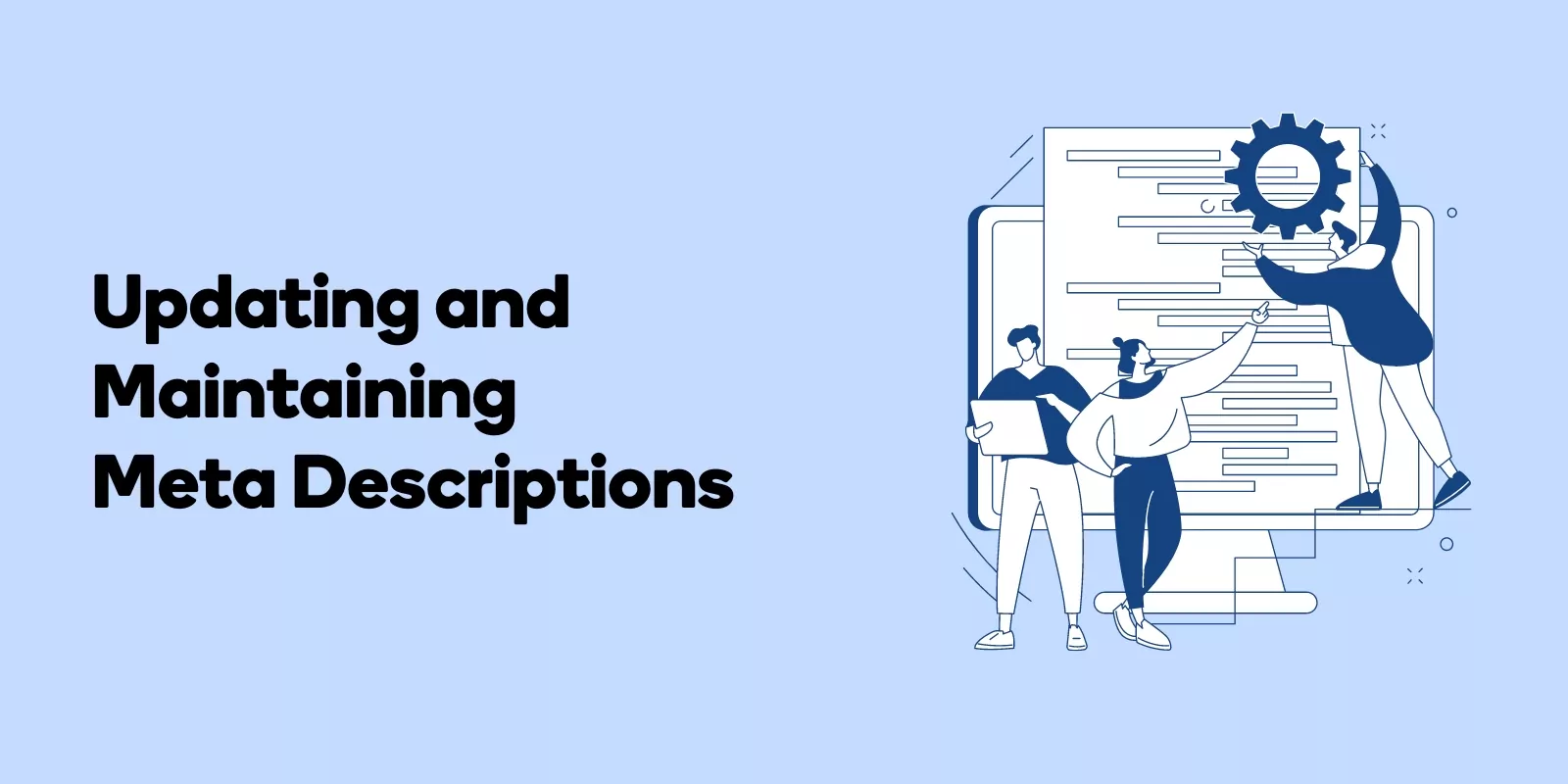In this “meta descriptions a comprehensive guide to writing them effectively”, we’ll dive into the world of meta descriptions and provide you with actionable tips and strategies to create effective, engaging descriptions that boost your online presence.
The Basics of Meta Descriptions
Meta descriptions are the backbone of your website’s visibility on search engine results pages (SERPs).
They’re an HTML element that provides search queries with a brief summary of a webpage’s content, acting as a virtual “elevator pitch” for potential visitors.
Ensuring your meta descriptions are well-crafted and optimized for search engines is crucial for both search engine optimization (SEO) and user experience.
Let’s start by defining what meta descriptions are and why they’re important for your website’s success.
Defining Meta Descriptions
A meta description is an HTML tag that summarizes the content of a webpage, typically around 160 characters in length.
It appears under the page or title tag and in search engine results pages (SERPs), giving potential visitors an idea of what to expect if they click on your link.
The purpose of a good meta description is to provide a brief overview of the page’s content, helping both search engines and users understand what the page is about.
Crafting an effective meta description is essential for attracting clicks and driving traffic to your website.
Importance for SEO and User Experience
Meta descriptions play a vital role in both SEO and the user’s query experience. While they don’t directly affect search engine rankings, they can significantly impact click-through rates by providing a concise, relevant summary of the webpage’s content.
Unique, well-written meta descriptions can help your page stand out in SERPs and encourage users to click your link over your competitors’.
By focusing on search intent and incorporating target keywords into existing meta description, you can craft meta descriptions that effectively address the needs of your audience and drive more traffic to your website.
Crafting Effective Meta Descriptions
Now that we’ve covered the basics of meta descriptions, let’s dive into some tips and best practices for writing them.
Crafting an effective meta description requires a strategic approach, from selecting the optimal length and formatting of meta description examples to incorporating relevant keywords and addressing search intent.
In this section, we’ll explore how to create compelling, engaging meta descriptions that capture your audience’s attention and drive clicks to your site.
Optimal Length and Formatting
When writing a meta description, it’s important to keep it within the ideal length of 50 to 160 characters. This ensures your meta description length won’t be cut off in search results, providing users with a complete overview of your webpage’s content.
Start your meta description strong – include action phrases or a few words about your brand. This will ensure the most important text is captured first.
A well-crafted meta description tag that’s concise and properly formatted will entice users to click on your link and explore your website.
Incorporating Keywords
Strategically including target keywords in your meta descriptions is crucial for better visibility and relevance in search results.
When crafting your own meta description, aim to include your target keyword(s) naturally, without overstuffing or forcing them into the text.
This not only helps search engines understand the content of your page, but also increases the likelihood of users clicking on your link.
By focusing on a unique tone of voice and targeting specific keywords, you can create a compelling meta description that stands out in SERPs and attracts your target audience.
Addressing Search Intent
Understanding and catering to users’ search intent is essential when crafting meta descriptions.

Award-Winning
Sales Funnel & Website Expert
Ready for Revenue – Not Just “Traffic”?
- Websites that Work: Clean, fast, built to convert – no design fluff.
- Funnels that Sell for You: Step-by-step paths that turn clicks into paying customers.
- SEO That Hunts Buyers: Show up exactly when prospects reach for their wallets.
By focusing on the specific needs and desires of your target audience, you can create a great meta description that resonates with them and encourages them to click through to your site.
Analyze your competitors’ meta descriptions for inspiration and insights on best practices, and combine this research with relevant keywords to effectively reach your audience with an optimized message.
Examples of Well-Written Meta Descriptions
To illustrate the power of effective meta descriptions, let’s look at some examples from various industries.
These well-crafted descriptions showcase the strengths and effectiveness of unique, engaging meta descriptions that capture users’ attention and drive clicks to their respective websites.
By analyzing these examples, you can gain valuable insights and inspiration for crafting your own compelling meta descriptions.
E-commerce Websites
When it comes to e-commerce websites, a well-written meta description can make all the difference in attracting potential customers and driving sales.
For example, consider the meta description of an online retailer that reads, “Discover the latest trends in fashion with our curated collection of designer clothing and accessories. Shop now!
This description is concise, highlights the unique selling proposition (USP) of the retailer, and includes a call-to-action (CTA) that encourages users to visit the site and make a purchase.
News and Media Outlets
For news and media outlets, strong meta descriptions are crucial in capturing users’ attention and enticing them to read the full article.
A great example of writing meta descriptions comes from The Verge, whose meta description for a complex news story reads, “Explore the latest advancements in technology and their impact on society. Stay informed with our in-depth reporting and analysis.”
This description effectively summarizes the article’s content, incorporates relevant keywords, and encourages users to click through for more information.
Service-Based Businesses
Service-based businesses can also benefit from effective meta descriptions that clearly communicate their offerings and unique value propositions.
A well-crafted meta description for a plumbing company might read, “Experiencing plumbing issues? Our team of expert plumbers is here to help. Contact us today for a free quote!”
This description is concise, highlights the company’s expertise, and includes a call-to-action that encourages users to reach out for assistance.
Common Meta Description Mistakes to Avoid
While crafting engaging meta descriptions is vital for success, it’s equally important to be aware of common mistakes that can hurt their effectiveness.
In this section, we will identify frequent errors in meta description writing and offer solutions to prevent them.
By avoiding these pitfalls, you can ensure your meta descriptions are optimized for both search engines and users.
Duplicate Content
One common mistake to avoid is using identical meta descriptions across multiple pages. Duplicate meta descriptions can confuse search engines and users, resulting in lower click-through rates.
To prevent this issue, make sure each page on your website has a unique meta description that accurately reflects its content.
Utilizing dynamic variables to generate unique descriptions for each page’s code can also be an effective solution.
Overstuffing Keywords
Cramming too many keywords into your meta descriptions can make them appear unnatural, spammy, and hurt their SEO performance.
Instead, focus on incorporating relevant keywords naturally and strategically, without overdoing it.
Remember, the goal is to create a concise, engaging meta description example, that appeals to both search engines and users.
Exceeding Character Limits
Another mistake to avoid is exceeding the recommended character limit for meta descriptions. Descriptions that are too long may be cut off in search results, leading to a lack of clarity and understanding for users.
Keep your meta descriptions within the ideal length of 50 to 160 characters to ensure they display properly in SERPs and provide a complete overview of your webpage’s content.
Tools and Techniques for Meta Description Optimization
To help you create and maintain effective meta descriptions, there are a variety of tools and techniques available that can streamline the process and improve their performance.
In this section, we will introduce some useful tools and methods for optimizing your meta descriptions, including meta description checkers, competitor analysis, and A/B testing.
Meta Description Checkers
Meta description checkers are online tools that can help you review and analyze the quality and effectiveness of your own page’s meta description tag.
Remember, the goal is to create a concise, engaging. Examples of popular meta description checkers include Semrush’s On Page SEO Checker, VELOX Media’s Title and Meta Description Checker, and the Meta Length Checker.
These tools can help you ensure your meta descriptions are optimized for search engines and provide a better user experience.
Competitor Analysis
Researching your competitors‘ meta descriptions can provide valuable insights and inspiration for your own optimization efforts.
By analyzing their descriptions for patterns in length, tone, and keyword usage, you can learn from their successes and identify opportunities to stand out in search results.
Tools like Google Trends and Ahrefs can help you identify competitors and gain a better understanding of their meta description strategies.
A/B Testing
A/B testing is a powerful technique for optimizing your meta descriptions by testing different versions of a description and measuring their performance.
By making small changes to your descriptions and comparing the results, you can identify which version performs better and ultimately improve your click-through rates.
Google Optimize is a great tool for conducting A/B tests and measuring performance metrics, allowing you to fine-tune your meta descriptions for maximum effectiveness.
Updating and Maintaining Meta Descriptions
Regularly reviewing and refreshing your meta descriptions is crucial for ensuring their ongoing effectiveness and improving their performance.
In this section, we’ll highlight the importance of keeping your meta descriptions up to date and offer tips for maintaining their quality, including monitoring performance, refreshing old content, and staying current with SEO trends.
Monitoring Performance
Tracking the success of your meta descriptions is essential for identifying areas for improvement and measuring their impact on your website’s performance.
By using analytics tools like Google Analytics and SEMrush, you can monitor key metrics such as click-through rates and organic traffic to determine the effectiveness of your meta descriptions.
Regularly reviewing these metrics can help you make informed decisions about optimizing your descriptions for better results.
Refreshing Old Content
Updating outdated or underperforming meta descriptions can breathe new life into your content and boost its visibility in search results.
To refresh old content, consider revising the meta description to better align with current SEO best practices, incorporating new keywords, or updating the SEO meta description to better reflect the page’s content.
Regularly reviewing and updating your meta descriptions can help ensure they remain relevant and effective in driving traffic to your site.
Staying Current with SEO Trends
As SEO best practices evolve, it’s important to stay informed and adapt your own meta descriptions accordingly.
By keeping up with industry blogs and websites like Moz, Search Engine Land, and Search Engine Journal, you can stay on top of the latest trends and strategies for optimizing your meta descriptions.
By staying current with SEO trends, you can ensure your meta descriptions continue to perform well and drive traffic to your website.
Frequently Asked Questions
What is the meta description?
A meta description is an HTML attribute that provides a brief summary of the content of a web page. It’s essentially a short snippet that describes what a user can expect to find if they click on your page in the search engine results page (SERP).
Although meta descriptions do not directly influence a page’s ranking in search engine results, they play a vital role in attracting user clicks and improving the click-through rate (CTR). This is because the meta description is often displayed in search results underneath the page title and URL, serving as an ad copy that entices users to visit your site.
A well-written meta description can significantly enhance the visibility and attractiveness of your webpage in search results. Here are some key elements of a compelling meta description:
Relevance: The meta description should accurately reflect the content of the webpage. Misleading descriptions can lead to high bounce rates, which may negatively affect your site’s SEO.
Keyword Usage: Including relevant keywords in your meta description can help highlight the relevance of your content to the searcher’s query. When a user’s search term matches the keywords in your meta description, search engines often highlight them in bold, drawing the searcher’s attention to your result.
Length: The optimal length of a meta description is between 50-160 characters. If it’s too short, you might not fully convey the content of the page. If it’s too long, it might get cut off in the SERP, leaving the message incomplete.
Unique Content: Each webpage should have a unique meta description. Duplicate descriptions can lead to confusion for users and can be a missed opportunity to showcase different aspects of your site.
Call to Action: Encourage users to click on your page by including a call to action, such as “Learn more”, “Discover”, or “Try for free”.
In sum, the meta description is a crucial element of on-page SEO that helps to improve the visibility and attractiveness of your webpage in search results, thereby potentially increasing traffic to your site.
What is a meta description example?
A meta description is a brief summary that describes the content of a web page in the search engine results page (SERP). Here’s an example:
Meta Title: “Freshly Baked Chocolate Chip Cookies | Mary’s Bakery”
Meta Description: “Enjoy our freshly baked chocolate chip cookies, made with love and the finest ingredients. Visit Mary’s Bakery today for a sweet treat you won’t forget!”
The meta description gives searchers a quick overview of the page’s content, enticing them to click and read more.
What is a standard meta description?
A standard meta description is a concise summary of a webpage’s content that appears below the title in search engine results. It should be between 50-160 characters long to ensure that it displays properly across different search engines. The description should be relevant to the page content, include important keywords, and entice users to click on the search result. While meta descriptions don’t directly affect search rankings, they can influence click-through rates, which indirectly impact SEO.
What are meta description keywords?
Meta description keywords are the terms or phrases that you believe users will input into a search engine to find your webpage. Including these keywords in your meta description can help highlight the relevance of your content to the searcher’s query. When a user’s search term matches the keywords in your meta description, search engines often highlight them in bold, drawing the searcher’s attention to your result.
For example, if you’re writing a meta description for a page about homemade apple pie recipes, your keywords might include “homemade apple pie recipe”, “easy apple pie”, or “best apple pie recipe”.
What is the best tool for meta description?
The best tool for creating meta descriptions is SEMRush. It offers powerful keyword research, competitor analysis, and performance tracking tools that can help you craft effective descriptions that attract more clicks from potential customers.
This leading digital marketing tool is essential for any business looking to optimize their website visibility.
How do you write an attractive meta description?
Writing an attractive meta description involves a few key steps:
Include relevant keywords: Use keywords that are relevant to your webpage content and that users are likely to search for. This helps search engines understand your page’s content and can attract users’ attention in the search results.
Be concise and descriptive: Your meta description should be a brief, accurate summary of your page’s content. Aim for a length of about 50-160 characters to ensure the entire description displays in search results.
Provide a compelling reason to click: Your meta description should entice users to click on your result. You might highlight a unique feature of your page, a special offer, or the valuable information you provide.
Use active voice and action words: Encourage users to take action with phrases like “learn more”, “discover”, or “try for free”.
Avoid non-alphanumeric characters: Some non-alphanumeric characters can cause issues with how your meta description is displayed. Stick to plain text whenever possible.
Remember, every webpage on your site should have a unique meta description that accurately represents its content.
Conclusion
In conclusion, crafting compelling and engaging meta descriptions is essential for driving traffic to your website and improving user experience.
By understanding the basics of writing meta descriptions, employing best practices for crafting effective descriptions, avoiding common mistakes, and utilizing tools and techniques for optimization, you can ensure your meta descriptions are working to their full potential.
Remember to stay current with SEO trends and regularly update your meta descriptions for continued success in attracting users and boosting your online presence.
